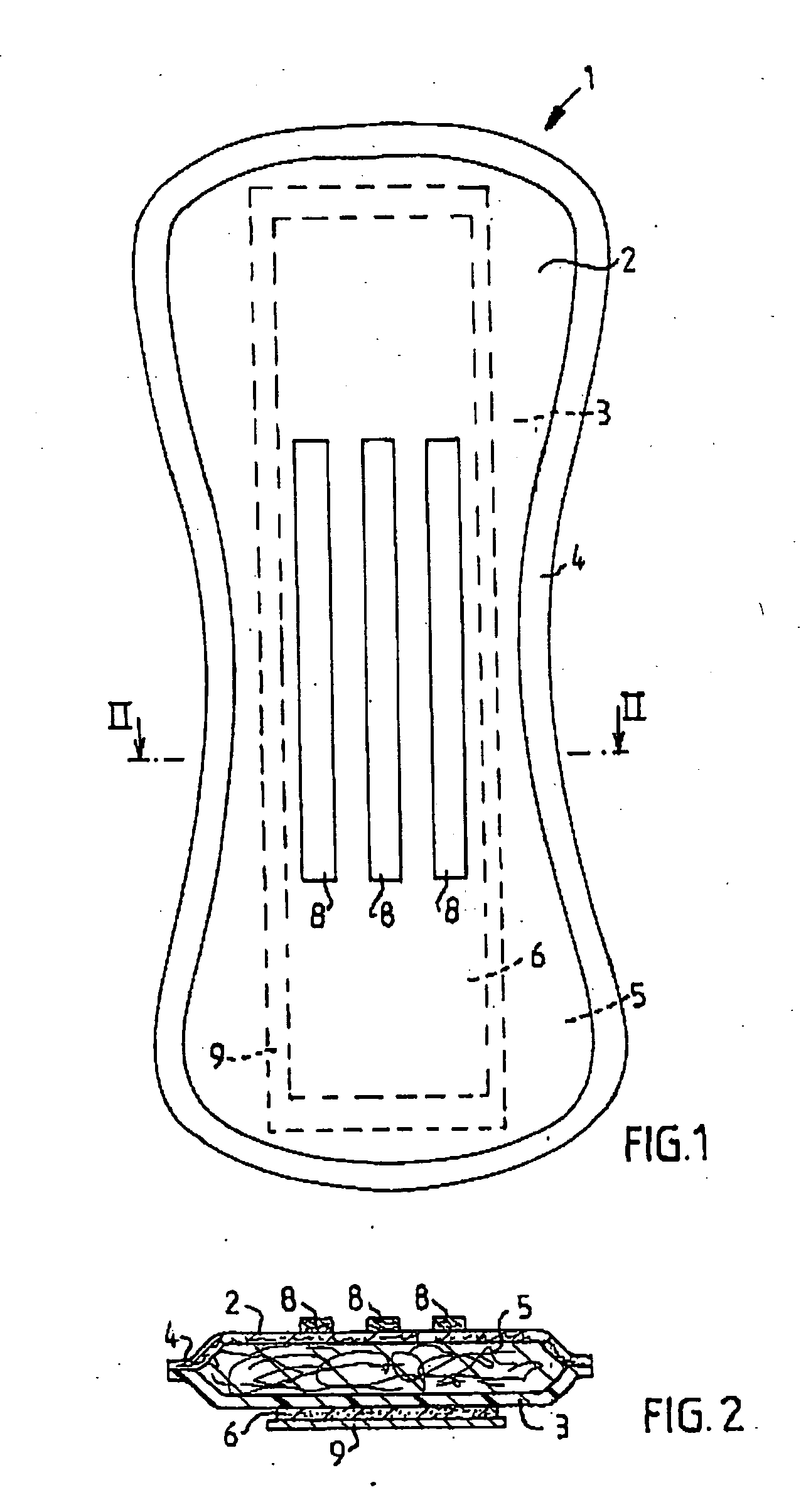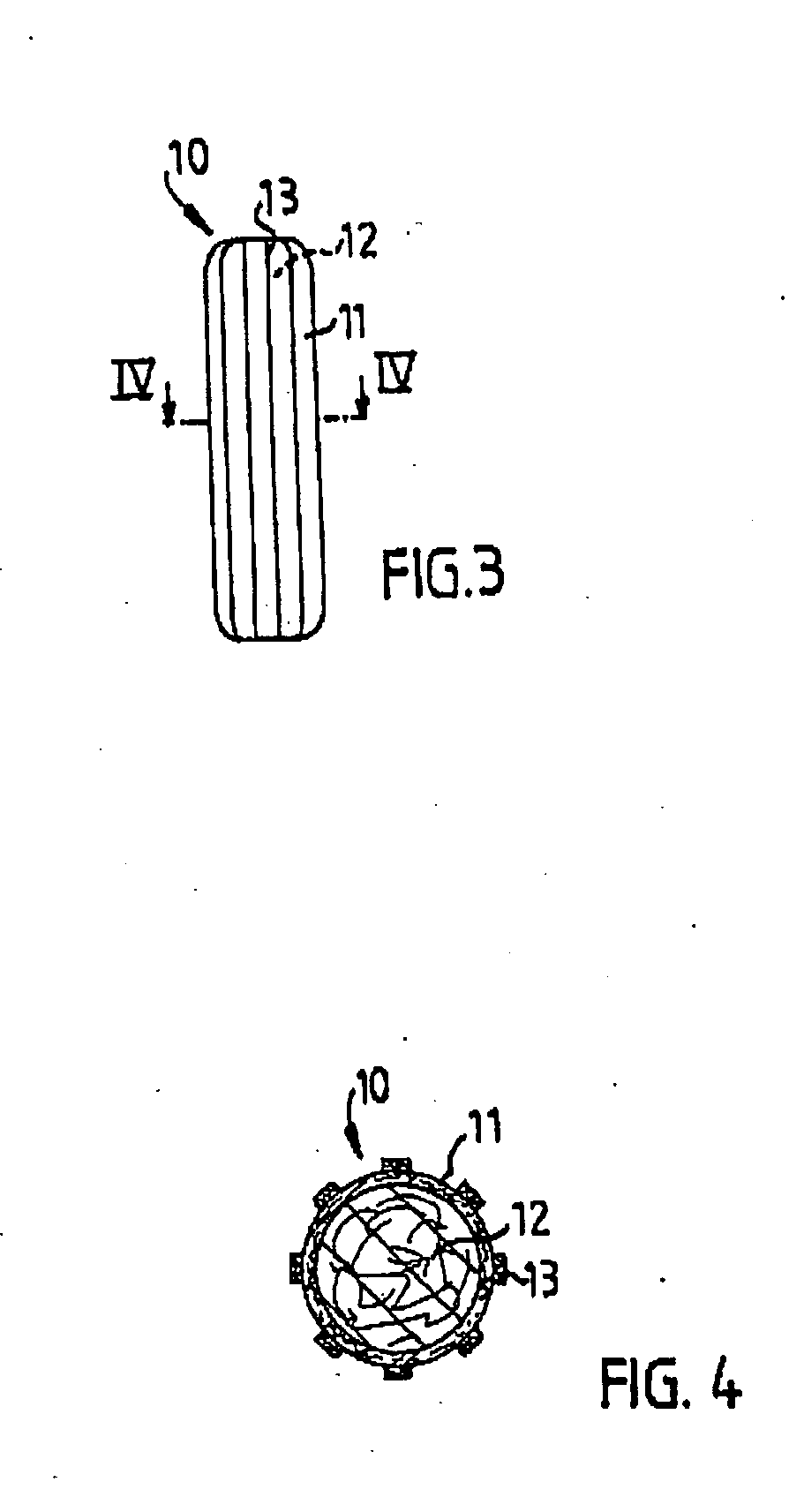Hygiene product with a probiotic composition
a technology of probiotics and hygiene products, applied in the field of hygiene products with probiotic compositions, can solve the problems of individual susceptibleness, disruption of normal microbial flora, and special risk for women, and achieve the effect of prolonging shelf life and improving the manufacturing process of hygiene products containing lactic acid producing bacteria
- Summary
- Abstract
- Description
- Claims
- Application Information
AI Technical Summary
Benefits of technology
Problems solved by technology
Method used
Image
Examples
example 1
[0064] Procedure for Drying with SiO.sub.2 as Contact Sorption Drying Carrier and Convective Drying:
[0065] An aqueous suspension of L. plantarum 931 (deposition No. (DSMZ): 11918) in 10% Na-glutamate and 10% glucose was used as a starting material. The cell concentration was 6.5.times.10.sup.11 cfu / ml. 80 ml of the suspension was mixed with 160 ml of SiO.sub.2 (Aerosil 200, Degussa Norden AB, Malmo, Sweden). Drying was performed in box with circulated dry air (33.degree. C., 0.8% relative humidity). The bacterial powder preparation was dry after approx. 6-8 hours. The final amount of bacterial preparation was 27 g with 2.4.times.10.sup.11 cfu / g, which corresponds to a calculated survival rate of 12%. The water activity of the powder was 0.034 measured with an equipment from Aqualab, model 3TE (Decagon Devices Inc., Pullman, Wash., USA).
example 2
[0066] Comparison of Convective Drying and IR-drying with and without Different Contact Sorption Drying Carriers
[0067] The bacteria (L. plantarum 931 (deposition No. (DSMZ): 11918)) were suspended in deionized water or in an aqueous solution of 10% trehalose. The contact sorption drying carriers tested were aerosil 200 (Degussa Norden AB, Malmo, Sweden), native potato starch and .beta.-glucane. The cell concentration was 10.sup.13-10.sup.14 cfu / ml. 2.5 g aerosil was added to 20 ml of cell suspension, 30 g .beta.-glucane was added to 25 ml cell suspension and 27 g potato-starch was added to 25 ml cell suspension, in order to achieve a "porridge" with a consistency convenient to handle. The final drying of the bacterial preparation to a powder was performed either via convective drying (40.degree. C., for maximum 3 hours) or with fast drying with IR (infrared light, 40-58.degree. C. for 5-7 minutes).
[0068] The results of the experiment are presented in Table 2. A very satisfactory sur...
example 3
[0069] Comparison of Drying Efficacy with and without Contact Sorption Drying Carrier
[0070] A water suspension of L. plantarum 931 (deposition No. (DSMZ): 11918) with a concentration of 5.7.times.10.sup.11 cfu / ml was mixed with the contact sorption drying carriers, aerosil (Degussa) and potato starch, respectively, and dried in a convective drying chamber (34.degree. C. and 1% relative humidity) for 24 hours. The water activity was determined after the drying (i.e. after 24 hours).
[0071] The results of Example 3 are presented in Table 3. As can be seen in Table 3, the water activity was one order of magnitude higher when no contact sorption drying agent was used. The water activity according to the present invention is preferably 0.30 or below and such low water activity levels could not be obtained without the use of a contact sorption drying carrier according to the present invention.
3 TABLE 3 Drying A.sub.w in Sugar carrier powder Trehalose None 0.45 10% Trehalose Aerosil 0.038 1...
PUM
 Login to View More
Login to View More Abstract
Description
Claims
Application Information
 Login to View More
Login to View More - R&D
- Intellectual Property
- Life Sciences
- Materials
- Tech Scout
- Unparalleled Data Quality
- Higher Quality Content
- 60% Fewer Hallucinations
Browse by: Latest US Patents, China's latest patents, Technical Efficacy Thesaurus, Application Domain, Technology Topic, Popular Technical Reports.
© 2025 PatSnap. All rights reserved.Legal|Privacy policy|Modern Slavery Act Transparency Statement|Sitemap|About US| Contact US: help@patsnap.com



